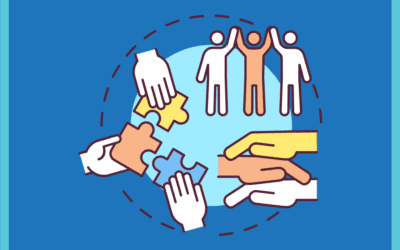The flipped classroom blended learning model reverses the typical in-class and out-of-class learner responsibilities. The traditional model of a higher education class has learners listening to lectures in-class and completing mastery work at home. The flipped classroom asks learners to study the new information. Then, learners discuss the material or apply the material to projects in class.
Group learning is the cornerstone of the flipped classroom model. By asking learners to familiarize themselves with the information before class, they have the chance to work with classmates to increase their knowledge. In other words, learners progress through the lower levels of learning, such as understanding and recall, at home. Then the higher levels of learning, like application, analysis, and evaluation, are practiced in class. Through group discussions and projects, learners hear others’ perspectives and build on their counterparts’ experiences.
The method of learning done at home isn’t rigid. The flipped model doesn’t dictate how the out-of-class learning has to take place. This may include online components as well as offline. Having this many choices allows instructors to create useful at-home learning portions. Popular at-home learning methods that are typically found online include recorded lectures, podcasts, modules, and articles from professional journals. Learners are exposed to content in a variety of ways. Offline activities include textbook, collecting artifacts, and interviewing professionals.
Armed with their out-of-class learning, learners attend class to gain the advantage of doing something with their efforts. Oftentimes learners just attend lectures and never have a chance to use what they learn. The flipped classroom blended learning model gives learners many opportunities to use their newfound knowledge.
Instructors benefit from the flipped classroom as well. Creating engaging activities or facilitating discussions breaks up the monotony of lecture, lecture, lecture. This type of variety can stave off burnout. Instructors have a chance to share their experience with novices. They can build relationships with learners and may even become mentors.
When learners have rapport with instructors, they are less likely to drop-out. The flipped classroom blended learning model gives instructors and learners time to develop these important relationships. In addition, learners benefit from group discussions and projects. Also, instructors can stretch their creative muscles by designing authentic tasks. But most importantly, the flipped classroom model supports learner success.
Want to Know Some of the Potential Challenges of Blended Learning?
Download our free PDF!





